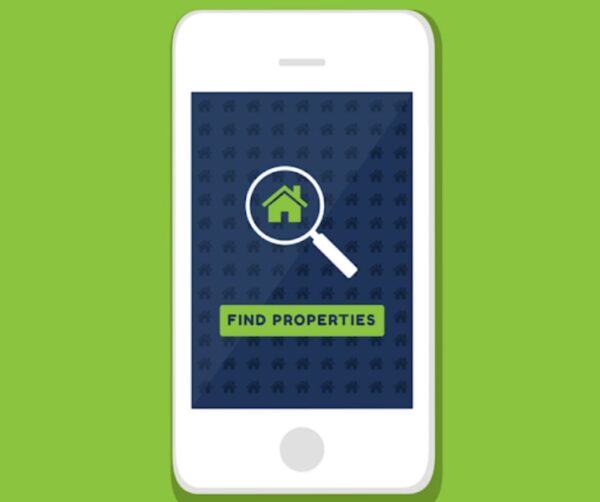According to the National Association of Realtors report, 44% of homebuyers start their search online. 93% of them rely on websites to look for listing information, and 73% use smartphones or tablets. While most agencies still use websites, mobile applications, like Trulia and Zillow, are gaining traction.
The latter has over 10 million downloads on Google Play and over 4.4 million on the App Store. With 196 million unique users clocked in 2019, Zillow is the most popular app for real estate buying. By analyzing their experience and insights by companies specializing in real estate app development, like purrweb.com, we’ve come up with three success factors that can make or break the app.
Data Is King

One of the undeniable benefits of using a real estate app for all parties is the increased number of listings. A couple of decades ago, homebuyers would have to visit half a dozen agents and attend countless open houses. Now, they can view all the necessary information on their smartphones. Collecting data is only the first step.
The app can use APIs to gather info, rely on MLS listings, enable agents to manually add the information, or combine multiple data streams. Once the information is collected, it must be normalized, validated, and entered into a database. Considering a variety of data types, including dates, numbers, text, images, and videos, selecting the right database type is crucial. It will affect the processing speed and overall user experience.
Moreover, the database technology stack should account for future scaling. As the number of users grows, so does the number of listings. Server space and database capabilities should be flexible enough to handle the increased load without crashes or long-term downtime necessary for reconfiguring. Zillow, for instance, has a database of over 110 million listings and counting. The monthly number of property profiles viewed on mobile devices is over 420 million.
Collecting user behavior and statistical data is crucial for further post-launch app development. Depending on the intended monetization strategy, building a customer relationship management (CRM) system may be necessary to track leads, create targeted recommendations, or contact users.
When handling third-party data and user information, following local and international personal data protection regulations is necessary. Since GDPR came into effect in 2018, the fines can now exceed 20 million Euro, and proper data storage, transfer, and processing have become vital for existing and new businesses.
Pay Attention to User Experience

While 95% of real estate agencies have websites, and many of them are developing mobile applications, truly outstanding solutions succeed because of their user-centric design. Understanding users’ needs and requirements, along with the user flow throughout the app, should be paramount at the discovery stage.
Providing homebuyers with intuitive ways to operate the data can be achieved through several means. Good examples include:
- Advanced search and filtering. Granulated search results that fit up to a dozen parameters save users’ time and help them find the desired properties faster;
- Saved search and wish lists. Looking for a house to buy is a lengthy process, and users appreciate the ability to return to their favorite search results without repeating the steps;
- Messaging capability. Getting homebuyers in touch with real estate agents within the app instead of redirecting them to a website makes the process smoother for both parties.
Still, homebuyers are not the sole user category that real estate apps possess. Successful apps rely on an advanced user hierarchy to engage different levels of users and provide each with a select set of capabilities. For instance, agents need the capability to add listings manually, review the statistics, compare different properties, schedule open houses, and more.
Visuals Are Vital

Photos are never as good as a live tour of the property. But providing users with high-resolution images can still help them narrow down the search. Ensuring the app can handle large volumes of visual data is a must. However, today, it is not enough to be ahead of the curve. Real estate app leaders are adopting video walkthroughs and virtual tours, and so should any newcomers to the market.
Video walkthroughs are easier to handle, as they are nothing more than short video clips detailing the property’s specifics. Virtual tours require panoramic photos to be stitched together into a file suitable for 360-degree viewing. Virtual tours may be created using third-party tools or incorporated into the real estate agent toolset.
Maps represent another core feature for any real estate app. Aside from the obvious possibility to review the property location, maps can introduce multiple features to differentiate the app from competitors, such as:
- Drawing the area of interest on the map. Instead of specifying the radius, users can draw any shape on the map and see the listings within it;
- Markers for schools, stores, and other locations of interest. Clear markers provide users with all the necessary info at a glance;
- Neighborhood index. When combined with information from open government databases and other sources, maps can display crime levels, public transportation availability, and more;
- Heat maps for visual data distribution. Color overlays can be more illustrative than individual markers, especially when used for large scale maps.
Success Starts with a Single Step

The full extent of real estate app features seems staggering at first glance. Focusing on marketing and monetization strategies should help find the future app’s unique selling proposition and the core functionality of the minimum viable product.
Starting small with a proof-of-concept solution and checking its viability should serve as an essential step to success and a reliable way to collect user feedback crucial for future development.



















